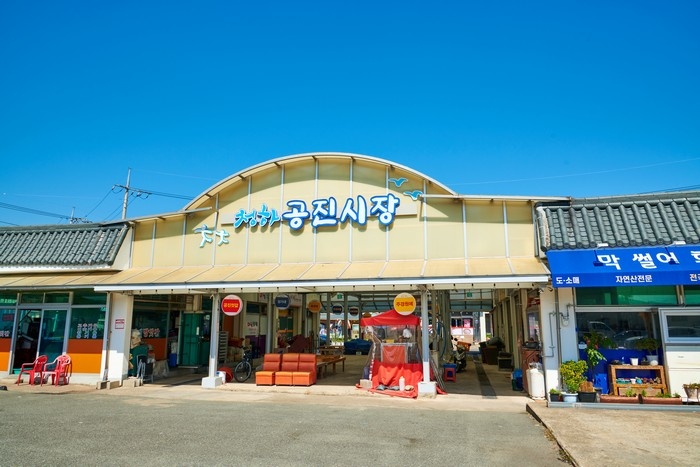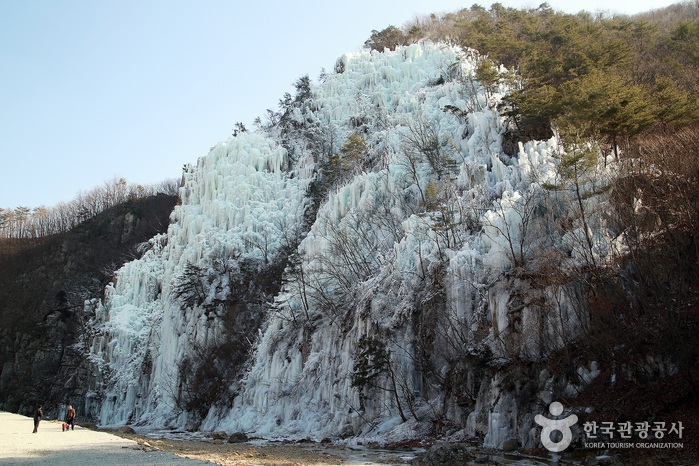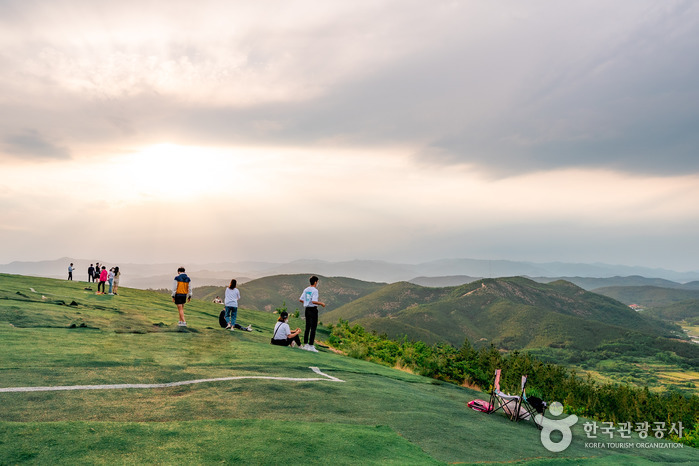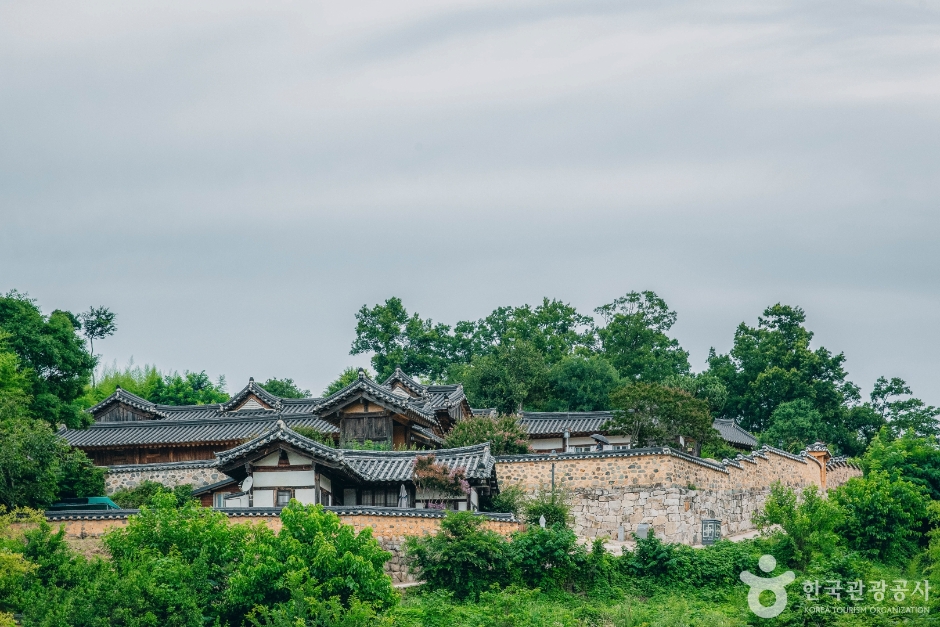Cheongha Gongjin Market (청하공진시장 (1, 6일))
14.2Km 2024-09-27
6 Cheongha-ro 200beon-gil, Cheongha-myeon, Buk-gu, Pohang-si, Gyeongsangbuk-do
Valle Eoreumgol de Cheongsong (청송 얼음골)
16.9Km 2023-01-27
Naeryong-ri, Juwangsan-myeon, Cheongsong-gun, Gyeongsangbuk-do
El municipio de Cheongsong-gun, en la provincia Gyeongsangbuk-do, es muy famoso por la calidad de sus aguas. En el valle Eoreumgol, el agua se congela incluso en verano, debido a los vientos fríos propios del valle. Muchas personas visitan este lugar donde el verano para probar las aguas frescas y tomar fotos pintorescas en las formaciones rocosas de los alrededores y de un templo en las cercanías. Hay un acantilado llamado Wonja, justo debajo del valle helado, que ofrece un refugio del calor del verano junto con vistas de una cascada artificial de 62 m de altura. En invierno, todo el lugar se congela y muchas personas escalan las paredes de hielo o participan de competiciones de esta disciplina. Aun cuando usted no sea afecto a los deportes invernales, aproveche las majestuosas vistas de las paredes de hielo de aquí en invierno, que atraen a muchos fotógrafos profesionales.
Observatorio del Ancla de Iga-ri (이가리 닻 전망대)
17.4Km 2023-02-13
Iga-ri, Cheongha-myeon, Buk-gu, Pohang-si, Gyeongsangbuk-do
Estación de Pohang (포항역)
17.6Km 2021-04-09
Pohangyeok-ro 1, Heunghae-eup, Buk-gu, Pohang-si, Gyeongsangbuk-do.
+82-1544-7788
La Estación de Pohang tiene sus orígenes en 1918. Desde la apertura del servicio de trenes de alta velocidad KTX, el 2 de abril de 2015, la estación está preparada para ser un nexo de transporte en la costa este del país. La estación está enfrente del mercado Jukdo, uno de los más grandes mercados de pescado del país, y está cerca de atracciones turísticas como el Parque del Amanecer, el templo Bogyeongsa, la Playa Bukbu y el templo Oeosa.
Sitio de Parapente de Gollyunsan (곤륜산 활공장)
18.7Km 2025-03-17
Heunghae-eup, Buk-gu, Pohang-si, Gyeongsangbuk-do
Parque Conmemorativo Sabang (사방기념공원)
18.8Km 2024-08-21
Haean-ro 1712, Heunghae-eup, Buk-gu, Pohang-si, Gyeongsangbuk-do
Hyangdan (향단)
19.3Km 2025-03-17
121-83, Yangdongmaeul-gil, Gyeongju-si, Gyeongsangbuk-do
Aldea Tradicional Yangdong de Gyeongju (경주 양동마을) [Patrimonio Cultural de la Humanidad de la Unesco]
19.6Km 2025-03-17
Yangdongmaeul-gil 134, Gangdong-myeon, Gyeongju-si, Gyeongsangbuk-do.





![Aldea Tradicional Yangdong de Gyeongju (경주 양동마을) [Patrimonio Cultural de la Humanidad de la Unesco]](http://tong.visitkorea.or.kr/cms/resource/44/2654744_image2_1.jpg)
 Español
Español
 한국어
한국어 English
English 日本語
日本語 中文(简体)
中文(简体) Deutsch
Deutsch Français
Français Русский
Русский